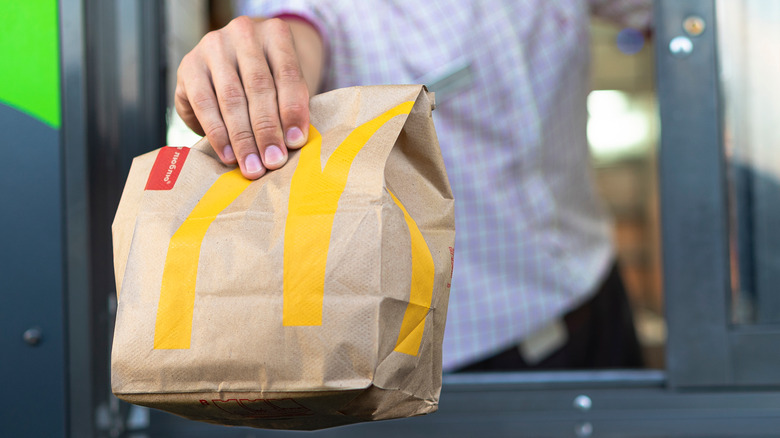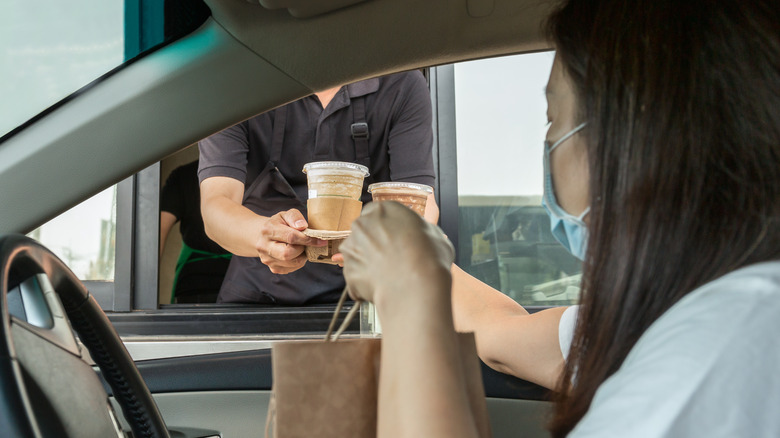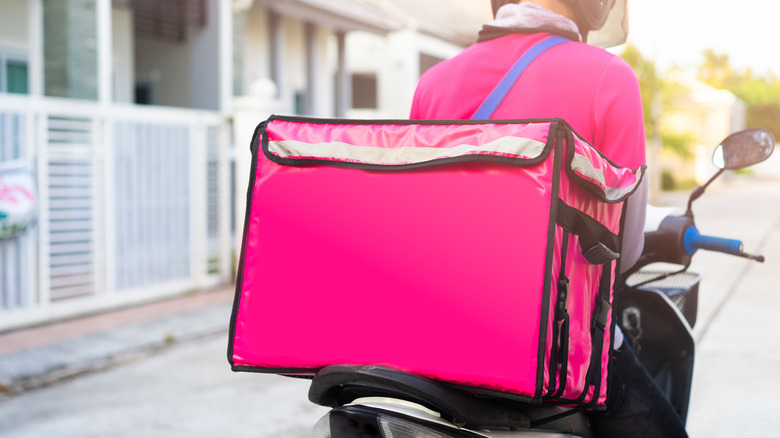The Essential Separation Rule To Keep Fast Food Hot On The Drive Home
If you've ever burned your fingers on piping hot McDonald's fries on the drive home, you know it can be hard to wait to eat your fast food. But there are a few potential reasons you might not want to chow down en route: perhaps you're driving or are bringing food home to your family, or just want to keep the interior of your car as clean as possible. In that case, you'll of course want to keep your meal hot on the way home — no one likes cold, hard french fries, after all, and they're notoriously difficult to reheat.
And the temperature of your food isn't just a matter of personal preference, as the CDC states that hot and cold foods should arrive with their respective temperatures intact for food safety purposes. (There is a reason people refer to the range between 40 degrees Fahrenheit and 140 degrees Fahrenheit as the "danger zone.") The government agency even recommends using a food thermometer to make sure whatever you order arrives at an acceptable temperature. And while food delivery skyrocketed during the pandemic, The Food Institute reports customers' primary criticism was that their food didn't arrive warm or fresh. Restaurants join in on the frustration to an extent, as delivery services are expensive and stressful (via CNN). For this reason, among others, delivery is often outsourced to apps such as DoorDash.
You can avoid cold chicken nuggets and lukewarm burgers by picking them up yourself; Let's take a look at how to become a pro at keeping your fast food hot on the drive home.
Separate hot and cold foods
A crucial tactic to keep your hot food hot involves separating it from your colder items. Let's say you get chicken nuggets, fries, and an Oreo McFlurry from McDonald's. Although you may be tempted to toss everything on the back or passenger seat, it's smarter to keep the nuggets and the fries together and place the Oreo McFlurry a safe distance away in a cupholder or other container to ensure the ice cream doesn't become melty while also cooling your food. This is because, as OptimoRoute explains, heat easily transfers from hot to cold food when the items are bagged together or placed next to one another. That means if you don't properly separate the menu items and give them enough space, you will be warming your cold food and cooling your hot food — a lose-lose situation.
This rule is backed by the CDC, which says hot and cold foods shouldn't be near each other while in transit. The government agency advises keeping an eye on how long it takes for the food to reach your house since certain ingredients can go bad if they sit out for too long.
How to maintain your food's temperature
If you'd really like to ensure your meal is piping hot, you can buy insulated containers to package your hot or cold items, which may be helpful when taking your fast food to a friend's house further away. [First] Class Sewing & Design recommends stainless steel containers for your hot food because they are great at conducting heat, although plastic or glass would work well too. While buying an insulated case may sound a little extra to the average consumer, if you frequently pick up fast food it may be worth the expense, as you can get a lot of use out of one container. If you don't often find yourself in the position of needing to transport fast food or in a pinch, wrapping hot food in aluminum foil will block the steam from getting out and should also do the trick, although it may not work as well for long distances, according to Cooler Spy.
That should take care of the nuggets and French fries, but how can you keep your McFlurry from melting on the drive home? An insulated container can help with this too, but to keep foods cool, Heating & Plumbing London recommends stuffing yours with ice packs and letting it sit in the freezer the night before you get your takeout. If you haven't planned your fast food trip that far ahead, you can also just use frozen water bottles, ice cubes, or even a wine cooler.
At the very least, make sure the temperature in your car isn't working against you. Route4Me recommends keeping the air conditioner off to avoid accidentally cooling down your entire meal. The same would go for the heater in the cooler months when you're trying to keep chilled or frozen foods cold.


